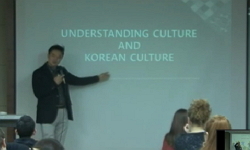앞서 살펴보았듯이 에도시대 무사는 지배신분임에 틀림없지만 동시에 도시에 거주하는 생활인이기도 했다. 전국시대동안 무사계층은 병농분리(兵農分離)의 과정 속에서 재지성을 상실한 ...
http://chineseinput.net/에서 pinyin(병음)방식으로 중국어를 변환할 수 있습니다.
변환된 중국어를 복사하여 사용하시면 됩니다.
- 中文 을 입력하시려면 zhongwen을 입력하시고 space를누르시면됩니다.
- 北京 을 입력하시려면 beijing을 입력하시고 space를 누르시면 됩니다.
에도시대 하급무사의 일상생활과 도시사회 -아사히 분자에몬(朝日文左衛門)의『오무로추기(鸚鵡籠中記)』(1691-1717)를 중심으로-
한글로보기https://www.riss.kr/link?id=G3762983
- 저자
-
발행기관
-
-
발행연도
2010년
-
작성언어
Korean
-
주제어
에도시대 ; edo period ; ö ; murö ; chü ; ki ; cattle town ; urban society ; lower samurai ; nagoya ; 하급무사 ; 아사히 분자에몬(朝日文左衛門) ; 『오무로추기(鸚鵡籠中記)』 ; 무사일기 ; 근세도시
-
자료형태
한국연구재단(NRF)
-
0
상세조회 -
0
다운로드
부가정보
국문 초록 (Abstract)
앞서 살펴보았듯이 에도시대 무사는 지배신분임에 틀림없지만 동시에 도시에 거주하는 생활인이기도 했다. 전국시대동안 무사계층은 병농분리(兵農分離)의 과정 속에서 재지성을 상실한 채 조카마치(城下町)로 이주해 주군으로부터 봉록을 받아 일상생활을 영위해야 했다. 요컨대 에도시대의 무사는 전투자, 관료, 치자, 행정인으로서 뿐만 아니라 도시인으로 일상의 삶을 영위하였다고 말할 수 있다. 따라서 에도시대 무사의 일상과 사상, 존재형태 등에 주목하고자 한다면 무엇보다 이들이 도시에 집단적으로 거주하였다는 사실에 주의해야만 할 필요가 있다. 더 이상 무력을 통해 자기의 존재이유를 설명할 수 없는 ‘평화’로운 에도시대를 구가하던 무사계층에게 도시적 삶이란 그야말로 일상성 그 자체였을 것이기 때문이다.
이러한 점에서 아사히 분자에몬(朝日文左衛門)의『오무로추기(鸚鵡籠中記)』는 에도시대 무사의 도시생활을 살펴보는데 매우 적합한 사료라 할 수 있다. 분자에몬은 그의 생애 대부분을 이른바 겐로쿠기(元禄期)에 살았다. 주지의 사실대로 겐로쿠기는 도쿠가와막부 성립 이후 에도, 오사카, 교토의 삼도(三都)를 잇는 오가도(五街道)의 육상교통로와 니시・히가시마와리(西・東廻り)의 해상교통로가 정비되고 이를 바탕으로 전국적인 상품유통체계와 화폐경제의 진전으로 말미암아 삼도의 상층 조닌(町人)을 중심으로 도시문화가 꽃을 핀 시대였다. 도시문화가 성숙기에 접어든 겐로쿠기 동안 하급무사들이 무사로서 어떠한 자의식을 가지고 살아갔는지, 소비적인 도시생활에 어떻게 적응해 갔는지 등의 질문에『오무로추기(鸚鵡籠中記)』는 생생한 답변을 제시해줄 수 있는 소재라 말할 수 있을 것이다.
다국어 초록 (Multilingual Abstract)
In Edo period, warriors were in a ruling position and at the same time, they were ordinary persons having their residences in cities. During the Japanese Sengoku era, as they lost their settlement in the process of separation between warrior and farme...
In Edo period, warriors were in a ruling position and at the same time, they were ordinary persons having their residences in cities. During the Japanese Sengoku era, as they lost their settlement in the process of separation between warrior and farmer, the warrior class moved to Jokamachi(城下町) and had to lead their daily life relying on salary given by their master. In brief, it can be said that warriors in Edo period led their daily life as combatants, bureaucrats, governors, administrators as well as urbanites. Therefore, to pay attention to their daily life, their thought, and their existence of warriors in Edo era, first of all, it needs to note that they had their collective residences in cities. This is because of that such urban life should have been the dailiness itself to the warrior class enjoying 'peaceful' Edo period, when it was not able to explain the reason for their existence any more through force.
In this aspect, 『Omutochugi(鸚鵡籠中記)』by Bunjaemon(朝日文左衛門) could be a very suitable historic material to examine the urban life of warriors in Edo period. Bunjaemon lived most of his life in the so-called Genrokugi(元禄期). Even after the establishment of Tokugawa Bakuhu, Genrokugi was the period when the overland transportation route of Ogado Road(五街道) to connect three big cities of Edo, Osaka, Kyoto and the marine transportation route of Nisi・Higasimawari(西・東廻り) had been reorganized and as national flow system of commodities and monetary economy had progressed on the basis, urbiculture blossomed with the upper class Jonin(町人) in three provinces as the center. It believes that 『Omutochugi(鸚鵡籠中記)』 is a material able to provide vivid answers to questions such as with which sense of identity lower-grade warriors made their living or how they came to fit themselves for the consuming life of city during the Genrokugi when the urbiculture reached the maturity.







